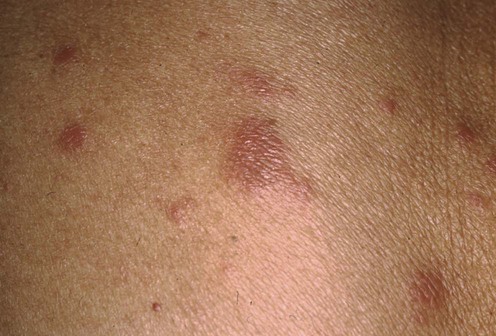Pincus LB, LeBoit PE, Goddard DS, Cho RJ, McCalmont TH. J Cutan Pathol 2010; 37: 416–25. The histologic pattern of this subgroup is characteristic but not pathognomonic. van de Pas CB, Hawk JLM, Young A, Walker SL. Arch Dermatol 2004; 140: 286–92.
Polymorphic light eruption

Specific investigations
Marked papillary dermal edema – an unreliable discriminator between polymorphous light eruption and lupus erythematosus or dermatomyositis.
An optimal method for experimental provocation of polymorphic light eruption.
![]()
Stay updated, free articles. Join our Telegram channel

Full access? Get Clinical Tree





